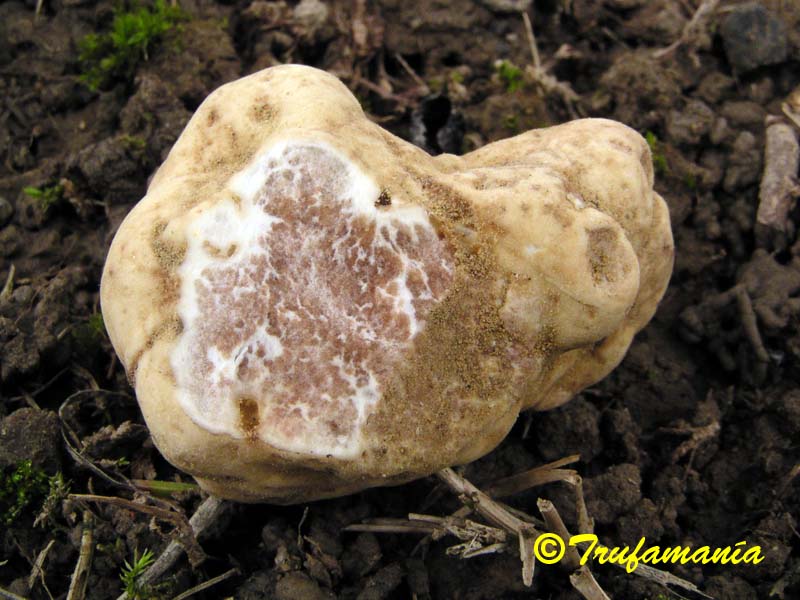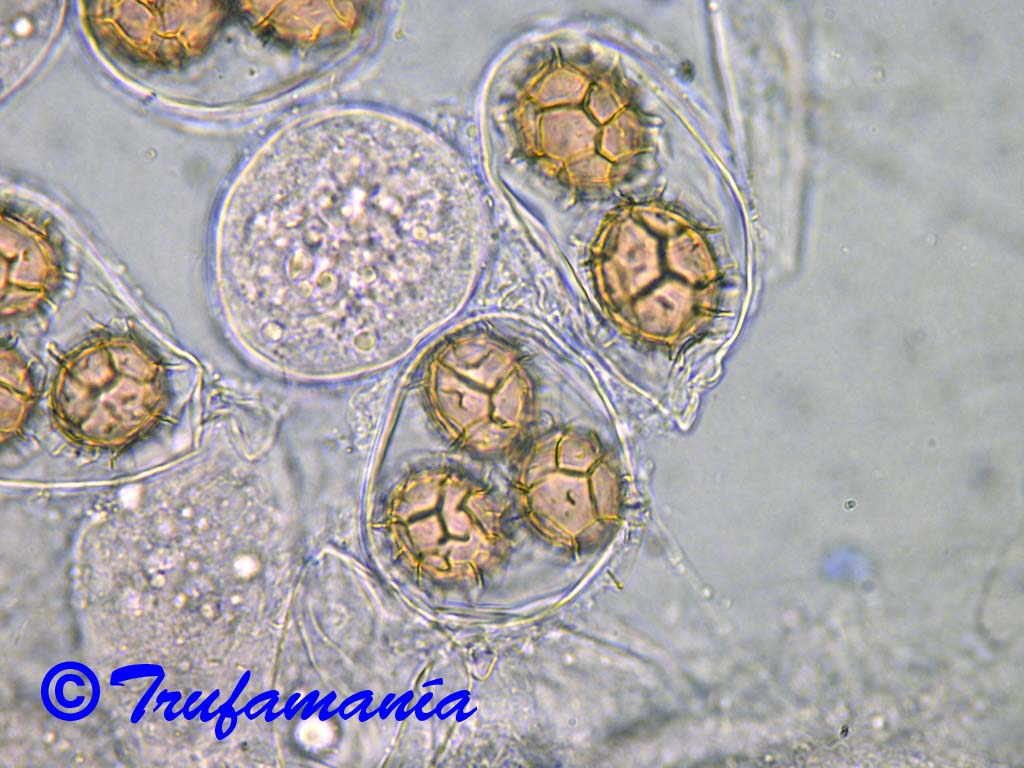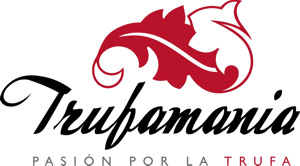TUBER MAGNATUM Pico
Melethemata inauguralia. De fungorum generatione et propagatione 79, without illustration (1788)

(Click on the picture to see more images)
Synonyms:
Tuber griseum Persoon (1801), Synopsis Methodica Fungorum 127
Tuber griseum Persoon: Fries (1823), Systema Mycologicum 2, Pt. II: 292
Macroscopic characters:
Ascomata: hypogeous, irregular in form, lobed, gibbous, sometimes flattened, 2-6 (-15) cm in size, smooth in appearance but minutely papillose under the lens, pale ochre, sometimes greenish.
Gleba: firm, solid, soapy texture, whitish at first, becoming pale yellow, ochre brown, reddish brown, often with flesh-red spots, marbled with numerous, thin, whitish, meandering, anastomosing veins.
Odour: strong, a complex mixture of methane gas, fermented cheese and garlic.
Taste: strong, pleasant, garlicky
Habitat:
Marly calcareous soils with high macroporosity, in generally well drained alluvial plain forests. Soils are usually grey and stones are rare. Always in shady woods with a limited temperatures fluctuation. Tuber magnatum are harvested in areas with lots of vegetation and without “burn” and with a microclimate characterized by a short dry season. July and August rainfalls are essential for their production. Tuber magnatum season is very short, from late September to late November, according to region. They are associated with poplars (Populus), willows (Salix), hazels (Corylus), oaks(Quercus) and lindens (Tilia). The Italian white truffle has not yet been cultivated.
Notes:
Tuber magnatum is the most expensive truffle in the world, reaching a price of more than 3,000 € per kg. It is harvested mainly in Italy and so far it has only been found in Italy, Croatia (Istria), Slovenia and Hungary. They must be eaten raw. Once you cook them they lose all their aroma

(Click on the picture to see more images)
Microscopic characters:
Asci: subglobose, ellipsoid, sessile or short-stalked, 60-90 x 50-60 µm, 1-3 (-4)-spored (usually 2-spored).
Ascospores: 20-33 x 20-30 µm excluding ornament, size variable depending on number of spores in the ascus, Q range = 1.05-1.33, subglobose to broadly ellipsoid, light yellow, yellow ochre at maturity, ornamented with a coarse irregular reticulum 4-5 (-8) µm high, meshes variable, usually 2-3 across width of spore.
Peridium: pseudoparenchymatous, composed of subglobose to ovoid cells
| Antonio Rodríguez trufamania@gmail.com antonio@trufamania.com |



